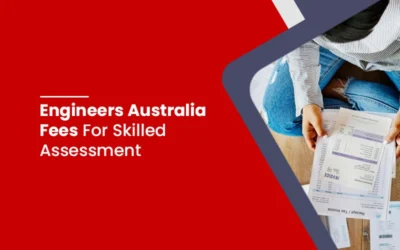Everything you need to know about Civil Engineering Draftsperson

Table of Contents
Civil Engineering Draftsperson performs a wide variety of tasks both in the field and in the offices. They assist in the study, planning, design, operation and maintenance of construction projects related to civil engineering. Their work mostly entails the preparation of detailed plans and drawings for civil engineering work; thereby supporting engineering professionals. They might plan and oversee systems for transportation, sewer, water treatment plans, bridges or a host of other structures.
Since Civil Engineer Draftsperson’s work eventuate in the actual construction work, they must be acquainted with diverse technical drawing concepts and Computer-Aided Design (CAD). Further, they need formal training and qualification in structural engineering or construction design to become a civil engineering draftsperson.
Civil Engineering Draftsperson falls under the Engineering Associate category as recognized by Engineers Australia (EA). Civil Engineers, who want immigration to Australia as a Civil Engineering Draftsperson have to apply through the Competency Demonstration Report (CDR) pathway.
Civil Engineering Draftsperson CDR report format
A CDR report must include documentary evidence that demonstrates the core engineering knowledge and expertise of the candidate. The Civil Engineering Draftsperson CDR contains documents such as a Curriculum Vitae (CV), Continuing Professional Development (CPD), three Career Episodes (CE), and a Summary Statement.
Curriculum Vitae (CV)
Curriculum Vitae for Civil engineering draftsperson must include detailed information on your academic and work experience. The CV must include all the activities you’ve been involved in and must be concise. The CV should not be more than three A4 papers and should be written in chronological order with the following information for each work employment you’ve undertaken.
- Name of the organization, contact information, and its location
- Dates and period of employment
- The position you were assigned
- Specified role during your employment period
Continuing Professional Development (CPD)
Continuing Professional Development (CPD) is the process of staying up to date with advances in engineering after you have earned your undergraduate education. Your CDR submission must contain all applicable CPD. This CPD must be given in the form of a list: title, time, period, venue and location. Your CPD should not be more than one A4 paper.
Career Episodes
A career episode describes your engineering qualifications and/or job experience. Each career episode must be distinct and should emphasize a specific period or aspect of your engineering activity. A Career episode must specifically show how engineering experience and skills were applied in the nominated occupation. That is, explain what you did and why. Describe how you did so, emphasizing your contribution. Each description should be a minimum of 1000 words and a maximum of 2500 words. The carried episodes must be written in your own words and follow the format specified by Engineers Australia.
Civil Engineering Draftsperson Career Episode Sample 1: “Preparing specification and sketches of sewage infiltration and storm-water infrastructure pipework.”
Civil Engineering Draftsperson Career Episode Sample 2: “Creating design, part, and detail sketches of a suburban structure’s concrete steel frames.”
Civil Engineering Draftsperson Career Episode Sample 3: “Plumbing drawings and concept for a residential building in Islamabad, Iran.”
Summary Statement
While a career episode demonstrates your engineering activity in a particular project, a summary statement sums up your impression and role in it. After completing your career episodes, you must analyze them to ensure that you covered all competency elements for the nominated occupation.
Your Summary Statement shows the findings of the study. The Summary Statement links the competency elements to the same paragraph in your Career Episode, where each element appears. You would need to number the paragraphs of your career episodes to do this.
Civil Engineering Draftsperson Responsibility
- Preparing drawings, maps, tabulations, schedules, and designs for structural engineering projects such as infiltration, water supply, and sewerage reticulation schemes, highways, airports, dams, railway lines, and other infrastructure, as well as conducting and guiding fieldwork and laboratory research
- Interpreting task assignment orders, following proper protocols and choosing suitable equipment
- Collecting and analyzing results, as well as performing computations
- Estimating material costs and ensuring the completed works adhere to requirements, rules, and contract terms
- Inspecting structural engineering projects, as well as organizing and supervising maintenance and repair jobs
Carrying out building material field and laboratory research
Civil Engineering Draftsperson Requirement for a Skill Assessment
This occupation necessitates a degree equivalent to an Australian Qualifications Framework (AQF) Diploma or higher, in a discipline particularly applicable to the nominated occupation.
If the qualification is in an area highly related to the profession, at least one year of relevant post-qualification work at a suitable competence level, achieved within the last five years is expected.
However, if the degree is not in a highly relevant sector, two years of highly relevant work at a suitable competence level are needed during the past five years. If you have an additional certification at the AQF Certificate IV level in a strongly applicable sector, it is limited to one year.
If your employment is pre-qualification, you must have 3 additional years of employment in the related field. This is in addition to one year of highly applicable work experience in the previous five years. A positive Skills Evaluation Outcome requires a positive assessment of both training and jobs.
CDR is an excellent way to demonstrate your knowledge and expertise as a Civil Engineering Draftsperson that matches the Australian Standard. A well-written Competency Demonstration paves the way for people to immigrate to Australia. However, writing a CDR can be an uphill task as you need to be specific and highlight your competencies precisely. But people with years of work writing CDR reports will give people 100% certainty that they will complete your skill assessment.
Recent Posts
- Benefits of RPL Writing for Professional Advancement—Seize the Opportunity! July 8, 2024
- Unlocking Your Potential: Benefits of NER Registration for Engineers—Don’t miss out! July 4, 2024
- 8 Advantages of being a Registered NER Engineer April 25, 2024
- Stage 1 Competency Standard for Professional Engineer December 4, 2023
- Secure Your Future: The Most In Demand Jobs for Skilled Migrants to Australia in 2024 November 3, 2023






